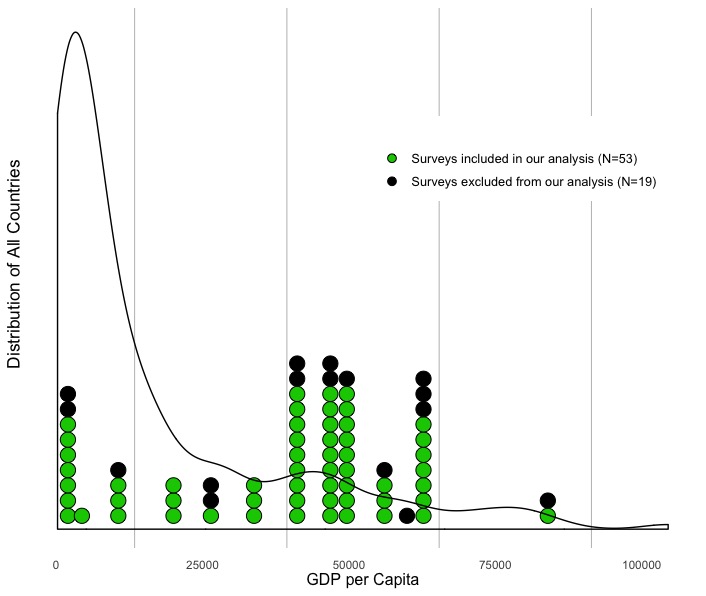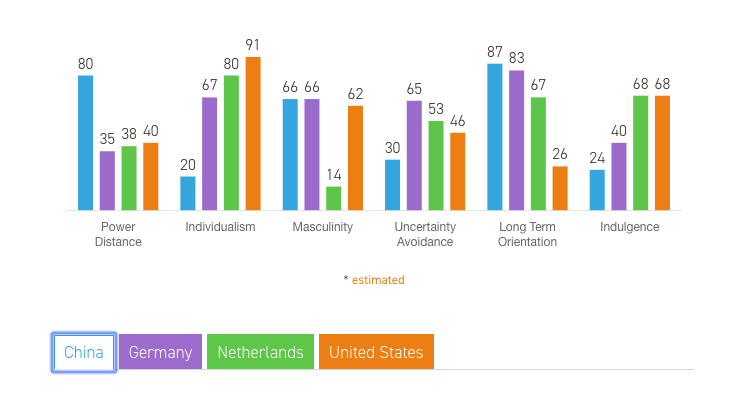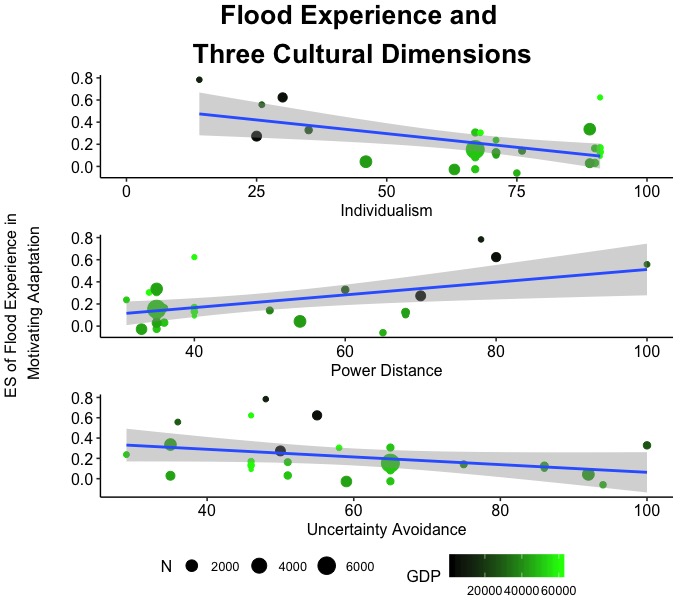Paper
- How does private adaptation motivation to climate change vary across cultures? Evidence from a meta-analysis
- International Journal of Disaster Risk Reduction, Available online 25 April 2020, 101615
- https://doi.org/10.1016/j.ijdrr.2020.101615
There is a considerable amount of discussion surrounding climate change, its impacts, and possible mitigation efforts. However, it is increasingly evident that due to historical (in)action humanity is already committed to facing consequences associated with climate change. Already in the first month of 2020 we have seen severe disasters that were exasperated by the effects of climate change. The Australian wildfires have decimated a significant proportion of the continent’s wildlife and thousands of homes and the devastating Indonesian floods have displaced more than 35,000 people. In these examples, like in countless others, the measures that the governments had previously undertaken to prevent the different natural hazards from becoming disasters, were revealed to be insufficient. Adaptation by households is becoming more of a necessity in our new climate reality.
To better encourage adaptation at a household level (and not just for the wealthy), it is critical that we better understand what motivates adaptation by looking at who adapts and why. There are an uncountable number of ‘factors’ that influence human behavior and likewise influence a person’s decision to adapt. Different decision-making-theories such as Protection Motivation Theory or the Theory of Planned Behavior narrow down the number of ‘factors’ to an important few that the theory defines as the most influential variables in a given persons’ decision making process. Often researchers will then use the variables from a given theory to design surveys or questionnaires; where then in turn, they use the collected data to research behavioral decision-making criteria from a given perspective.
What is often insufficiently addressed in this line of research is: are the factors that influence climate adaptation the same cross-culturally? And if not, are there patterns to the differences?
We investigate these questions and several others in the paper published by International Journal of Disaster Risk Reduction: How does private adaptation motivation to climate change vary across cultures? Evidence from a meta-analysis. To do so, we decided it was necessary to look at only one aspect of climate adaptation in order to minimize the variance in our analysis thus, we decided to focus on flooding, one of the most damaging disasters associated with climate change, as an emblematic hazard.
We collected all the research papers we could find that investigated an individual or household taking some adaptation action to flooding. At this preliminary stage we noticed a somewhat surprising and worrying trend. Climate change disproportionately affects those least responsible for it; namely residents of nations in the Global South whose emissions per capita are well below their Global Northern neighbors. Yet, paradoxically, much of the research on individual climate adaptation takes place in the Global North; the finding of which are regularly broadly generalized internationally without regard for the national differences. Below is a plot of the studies we found vs. the global GDP per Capita distribution. This illustrates the need for more work to be done in countries with less GDP per Capita; generally located in the Global South.

After finishing our literature search, we arrived with data from 56 different studies that took place in 25 countries. In these studies, there were seven factors that the studies regularly measured the influence on an individuals’ decision to take adaptive action:
- Risk Perception
- Age
- Gender
- Prior Flood Experience
- Self-Efficacy
- Social Influence factors*
- Governmental Influence*
*(we consolidated into one variable for the purposes of this study)
From each of the seven factors we recorded the ‘effect size’. An effect size is a statistical measurement of how much and how strong object “A” is related to object “B” (or “B” is related to “A”); in this case we were recording the measurement each of the factors had on motivating adaptation to flooding. After all of the effect sizes were recorded, we collected Hofstede’s Cultural Rankings for each of the countries that a survey had been conducted in. Hofstede is a Sociologist that, in collaboration with others, identified six cultural dimensions that the different countries of the world vary on in a somewhat linear fashion. In the graphic below you can see the six dimensions and scores for four example countries.

Next, to measure the effect of culture and explore the role it plays in influencing individual adaptation, we plotted the effect sizes of each factor against the cultural rankings of the countries in which they were conducted. Upon graphing the cultural scores and the effect sizes we observed several interesting, statically significant patterns. For example, the effect that prior flood experience had on motivating adaptation to flooding had a relationship with several dimensions of culture; as shown in the graphic below. What these significant relationships suggest is that culture indeed does play a role in influencing what and how individuals will respond to the different factors theorized to motivate adaptation to flooding. This finding is supported by a number of different sociology articles that discuss cultural differences in subjects such as risk, human behavior, etc. however, it is one of the first research papers in the field of climate change adaptation to quantitatively demonstrate the influence of culture on such a broad scale.

Understanding how and why individuals adapt is important for spreading information correctly and efficiently, for understanding individual and community motivation. Researchers and policy makers can make use of these findings to better tailor their message, plan, or model and thereby more effectively motivate individual adaptation. More cultural findings as well as several other interesting insights into the field of research on individual adaptation motivation to flooding are presented in our paper. The paper is currently under review, but we will include a link when it is published.
